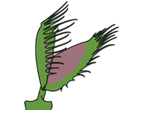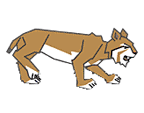Interdependence
Interdependence is a key idea in science. As students learn about science, they begin to understand that the earth is not a group of discrete parts but a continuous environment existing over time as well as place. Interdependence within and between biological and physical environments is fundamental. This resource provides ways into the idea of Interdependence: the adaptation of living organisms to their environments and their modes of feeding, and how feeding relationships between living organisms in an environment involve energy transfers that ultimately affect their survival.
Useful printable documents to download are the one-page Overview of the learning routes (PDF document 71KB) and more detailed Teachers' Guide (PDF document 987KB). You can access both of these from the Teacher View. The Student View is for classroom delivery and independent student work. The Interdependence video (streaming video 8MB) highlights key ideas and questions and is useful both for teacher background and as a classroom stimulus.
Interdependence is made up of two complementary learning routes and students consider one big question in each route:
 Adaptation
AdaptationHow is it that living organisms are so well adapted to survive and reproduce in their natural environments?
 Energy transfer
Energy transferHow do living organisms in an environment depend on one another to survive and why is energy transfer so important?